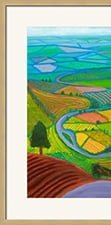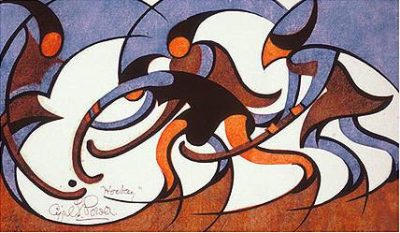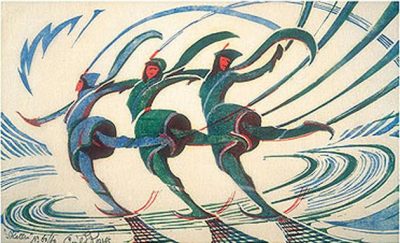Cyril Edward Power (17 December 1872 – 25 May 1951) was an English artist best known for his linocut prints. His artistic journey was multifaceted, encompassing not only visual expression but also architecture and teaching. Here are some key points about this remarkable artist:
”more”
Early Years and Architecture:
Born in Redcliffe Street, Chelsea, Cyril Edward Power was the eldest child of Edward William Power, who encouraged his early passion for drawing.
He studied architecture and worked in his father’s office, earning the Sloane Medallion from the Royal Institute of British Architects for his art school design.
Power married Dorothy Mary Nunn and worked as an architect, contributing to projects like the General Post Office and the King Edward VII Building.
His architectural expertise extended to teaching at the School of Architecture, University College, London, and Goldsmiths College.
Artistic Transition:
In the early 1920s, Power explored watercolour landscapes and townscapes alongside his first drypoints.
Around 1918, he met Sybil Andrews, with whom he maintained a fruitful artistic partnership.
Power’s linocut prints celebrated movement, geometry, and vibrant colours.
Grosvenor School of Modern Art:
In 1925, Power co-founded the Grosvenor School of Modern Art in London.
His linocut prints, often characterized by dynamic scenes and bold shapes, gained recognition.
The title of his linocut series, “This Is…”, became synonymous with his work.
Legacy:
Cyril Edward Power’s art transcends individual memories, inviting viewers to appreciate universal themes.
His linocuts capture the spirit of neighbourliness, shared moments, and the joy of giving.
Power’s legacy endures through his captivating prints and his influence on the world of visual expression.
”less”
£148.00
£148.00
£148.00
£148.00
£148.00
£138.00
£148.00
£148.00
£148.00
£148.00
£148.00














